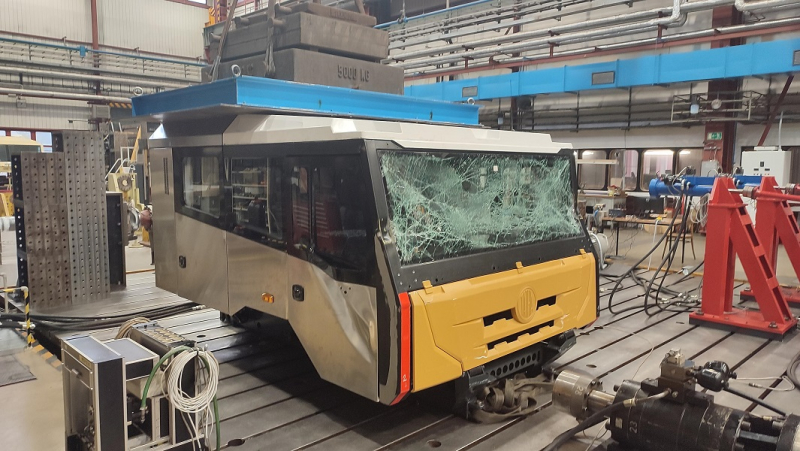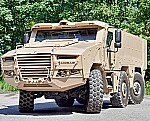Tatra Force: the safest cab on the current automotive market
Vehicle safety is one of the most important values that the entire automotive industry pursues and effectively promotes. The EU and the UN aim to halve vehicle accident fatalities by 2030. Over the last ten years, the number of people killed in road accidents in the Czech Republic has fallen by 33.8% and the number of people seriously injured by 43.9 %. Tatra Trucks is also committed to a high level of safety for drivers and vehicle crews, offering the safest cab on the current automotive market for both civil and firefighting, rescue and special operations without exaggeration.
Tatra Trucks is also committed to a high level of safety for drivers and vehicle crews, offering the safest cab on the current automotive market for both civil and firefighting, rescue and special operations without exaggeration. The third-generation cab of the Tatra Force series of its own design is characterised, with regard to the primary purpose of these vehicles, by a level of safety that goes far beyond the mandatory EHK 29 type-approval regulation, compliance with which is a prerequisite for operation on EU roads and highways.
The basis for the safety of the Tatra Force cab, the design of which was recently awarded the Red Dot award, is a high-strength and stable welded space frame filled with externally bonded metal or plastic panels. The cab is available as a two-door or four-door cab in a so-called crew version.
The EHK Regulation 29 consists of three parts (tests), for each test a new cab can be used in the approval process. However, the third-generation Tatra Force cab that Tatra Trucks launched last year passed all three tests in one sample successfully and without any problems. The conditions of EHK Regulation 29 are met and the cab passes all the tests, provided that a well-defined survival space remains in the cab after the tests to allow the insertion of a dummy. The cab shall remain attached to the vehicle frame and no cab door shall be opened during the test.

The first overwhelming test is the frontal impact. A pendulum fitted with an appropriately sized metal plate (derived from the total mass of the vehicle) shall strike the cab head-on in the space above its stowage. The second test is a frontal impact on the so-called A-pillar (i.e. the pillar in front of the front door). A pendulum fitted with a one tonne cylinder is lowered to its centre (in simple terms, the horizontal centre of the windscreen surface). Finally, the last test verifies the strength of the roof by impacting the flat pendulum on the upper edge of the cab and applying a static load to the roof equal to the load on the front axle of the vehicle.
However, EHK Regulation 29 is only a necessary requirement for the third generation Tatra Force. In fact, all versions of cabs, regardless of their purpose and design (i.e. two- and four-door cabs), are designed beyond this regulation in such a way that they also always comply with the so-called "firefighter's ROPS" according to the forthcoming update of the European standard for firefighting vehicles, which stands for Roll Over Protection System.
On request, it is also possible to supply cabs in the so-called "full ROPS" according to ISO 3471, valid for construction machinery. The icing on the cake is the combination of rollover protection (ROPS) and the Falling Objects Protection System (FOPS) according to ISO 3449, which can be offered for two-door variants and is required, for example, for vehicle operation in mines and mining. Any modifications are always limited to the cab shell or roof material and do not require additional weight-increasing devices that limit manoeuvrability and ground clearance.
From the above it is more than obvious that the Tatra Force cabs, even in their third generation, unlike the standard moulded cabs of competitors, are literally an insurance policy for the life of the vehicle crew and ensure their above-average protection in the event of even very serious accidents and dangerous situations. Tatra Trucks is thus supplying the market with vehicles where, even when it comes to safety, Tatra gets you further.










